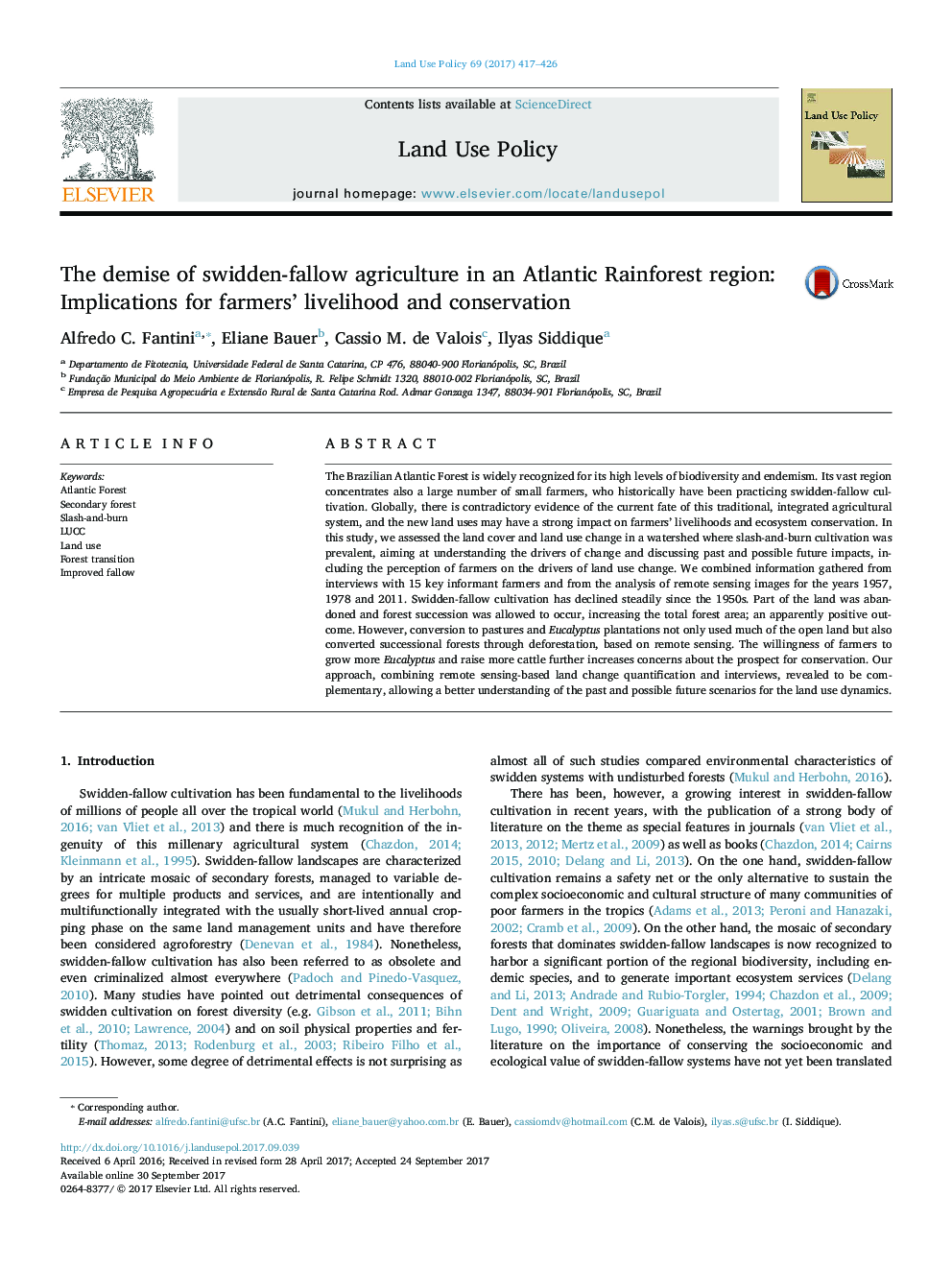| کد مقاله | کد نشریه | سال انتشار | مقاله انگلیسی | نسخه تمام متن |
|---|---|---|---|---|
| 6460408 | 1421814 | 2017 | 10 صفحه PDF | دانلود رایگان |
- Land use changes since 1957 were assessed trough remote sensing images and interviews.
- Swidden-fallow cultivation has continuously faded out.
- Tree plantations and cattle raising replaced large part of the abandoned crop fields.
- These land uses are also driving deforestation of successional forests.
- Socioeconomic benefits are uncertain, biodiversity is expected to be impacted.
The Brazilian Atlantic Forest is widely recognized for its high levels of biodiversity and endemism. Its vast region concentrates also a large number of small farmers, who historically have been practicing swidden-fallow cultivation. Globally, there is contradictory evidence of the current fate of this traditional, integrated agricultural system, and the new land uses may have a strong impact on farmers' livelihoods and ecosystem conservation. In this study, we assessed the land cover and land use change in a watershed where slash-and-burn cultivation was prevalent, aiming at understanding the drivers of change and discussing past and possible future impacts, including the perception of farmers on the drivers of land use change. We combined information gathered from interviews with 15 key informant farmers and from the analysis of remote sensing images for the years 1957, 1978 and 2011. Swidden-fallow cultivation has declined steadily since the 1950s. Part of the land was abandoned and forest succession was allowed to occur, increasing the total forest area; an apparently positive outcome. However, conversion to pastures and Eucalyptus plantations not only used much of the open land but also converted successional forests through deforestation, based on remote sensing. The willingness of farmers to grow more Eucalyptus and raise more cattle further increases concerns about the prospect for conservation. Our approach, combining remote sensing-based land change quantification and interviews, revealed to be complementary, allowing a better understanding of the past and possible future scenarios for the land use dynamics.
Journal: Land Use Policy - Volume 69, December 2017, Pages 417-426
